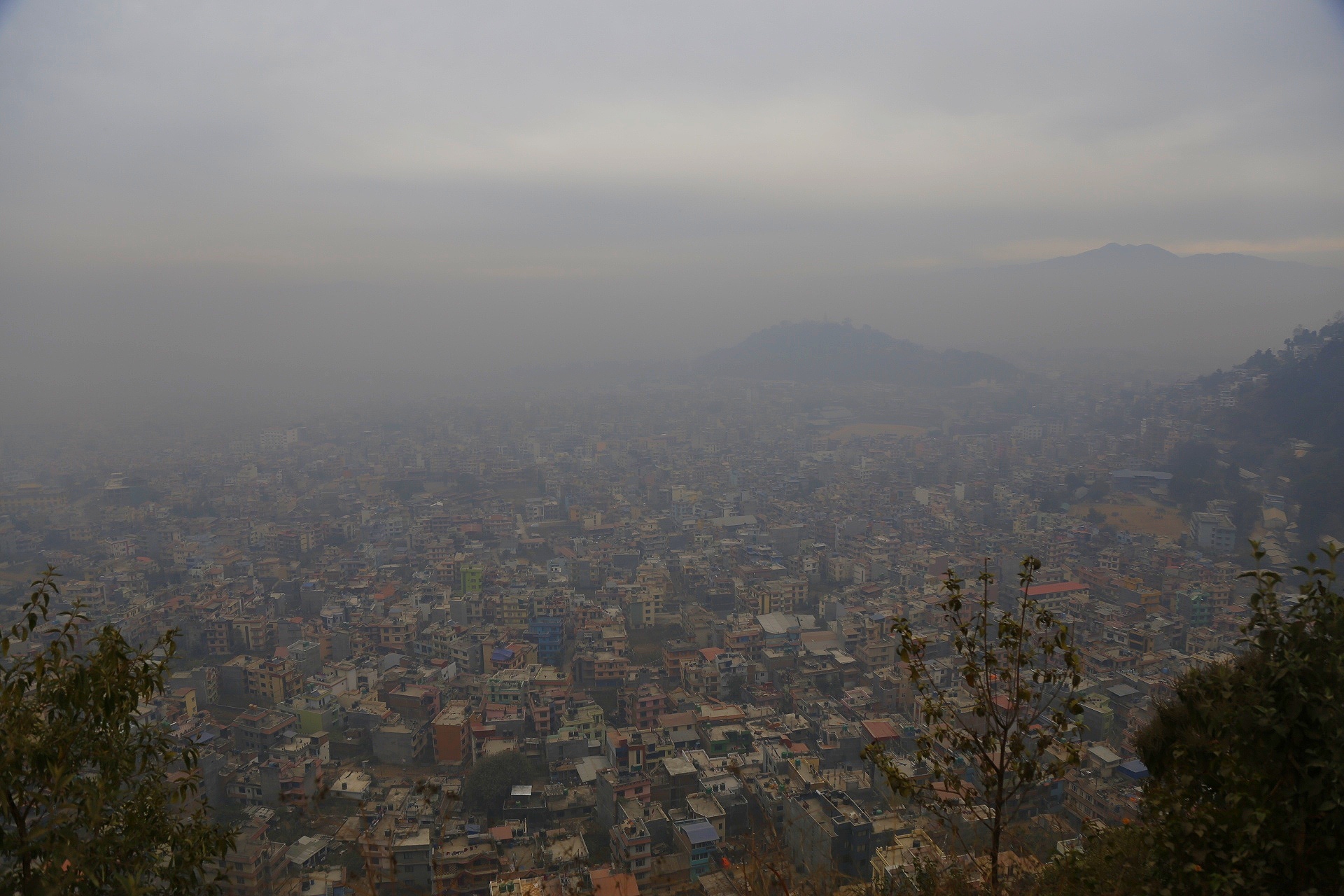Report on Air Quality Alert in Central Ohio and Alignment with Sustainable Development Goals
Executive Summary
An Air Quality Alert has been issued for the Central Ohio region due to forecasted ground-level ozone concentrations reaching an Air Quality Index (AQI) of 101. This level is categorized as “unhealthy for sensitive groups” and presents a significant public health challenge. This report analyzes the event through the lens of the United Nations Sustainable Development Goals (SDGs), highlighting the direct connections to public health, sustainable urban living, and climate action.
Meteorological Conditions and Environmental Context
The elevated ozone levels are attributed to specific atmospheric conditions that underscore the environmental challenges faced by urban communities, a key concern of SDG 11 (Sustainable Cities and Communities).
- High-Pressure System: A prevailing high-pressure system over the Great Lakes region is inhibiting the vertical mixing of air, trapping pollutants near the surface.
- Low Wind and Sunlight: Calm to light winds are reducing the dispersion of pollutants, while warm, sunny weather acts as a catalyst for the chemical reactions that form ground-level ozone.
These conditions illustrate the intricate relationship between weather patterns and air quality, which is a critical consideration for SDG 13 (Climate Action), as changing climate patterns can increase the frequency and severity of such events.
Public Health Implications and Alignment with SDG 3 (Good Health and Well-being)
The primary impact of the Air Quality Alert is on public health, directly addressing the mandate of SDG 3 to ensure healthy lives and promote well-being for all at all ages. An AQI value exceeding 100 poses a tangible health risk.
Vulnerable Populations
The following groups are identified as being at a heightened risk of experiencing adverse health effects:
- Active children
- The elderly
- Individuals with chronic respiratory conditions, including asthma and COPD
Recommended Health Precautions
To mitigate health risks and uphold the principles of SDG 3, sensitive groups are strongly advised to take the following precautions:
- Limit prolonged or strenuous outdoor activities.
- Schedule necessary outdoor tasks for the morning, when ozone concentrations are typically lower.
- Seek medical advice if respiratory symptoms, such as breathing difficulties, occur.
Mitigation Strategies for Sustainable Communities (SDG 11, SDG 12, & SDG 13)
Public participation is crucial for reducing the pollutants that lead to ozone formation. The following recommended actions contribute directly to building more resilient and sustainable communities (SDG 11), promoting responsible consumption (SDG 12), and supporting climate action (SDG 13).
- Adopt Sustainable Transportation: Reduce reliance on single-occupancy vehicles. Opt for carpooling, public transit, cycling, or walking to decrease vehicle emissions.
- Modify Vehicle Refueling Practices: Refuel vehicles after 8 p.m. when lower temperatures reduce the evaporation of gasoline fumes. Avoid topping off the fuel tank to prevent spills, which contribute to air pollution.
- Eliminate Unnecessary Idling: Turn off vehicle engines when parked or waiting, as idling exhaust is a significant source of ozone precursors.
- Reduce Use of Gas-Powered Equipment: Postpone mowing lawns or using other gas-powered equipment until evening hours to minimize emissions during peak ozone-formation periods.
Analysis of Sustainable Development Goals in the Article
1. Which SDGs are addressed or connected to the issues highlighted in the article?
The article on the Air Quality Alert in Central Ohio addresses several Sustainable Development Goals (SDGs) by highlighting the interconnectedness of environmental quality, public health, and urban living.
- SDG 3: Good Health and Well-being: The core of the article is a public health warning. It explicitly states that the air quality is “unhealthy for sensitive groups,” including “active children, the elderly and people with asthma and COPD,” who may “suffer an increase in the number and severity of symptoms.” This directly connects air pollution to human health and well-being.
- SDG 11: Sustainable Cities and Communities: The issue is located in an urban area (“Central Ohio,” “COLUMBUS, Ohio”) and is managed by a “Mid-Ohio Regional Planning Commission.” The article focuses on a key aspect of urban environmental quality—air pollution—and its management within a city. The suggestions for reducing pollution, such as carpooling, using public transport, and avoiding vehicle idling, are all related to sustainable urban practices.
- SDG 13: Climate Action: The article links the formation of high ozone levels to weather conditions like “upper-level high pressure” and “warm, sunny weather,” which are influenced by broader climate patterns. Furthermore, the sources of ozone precursors, such as vehicle exhaust, are also significant sources of greenhouse gases. The recommendations to reduce pollution (e.g., driving less) are actions that mitigate both local air pollution and climate change.
2. What specific targets under those SDGs can be identified based on the article’s content?
Based on the issues discussed, the following specific SDG targets are relevant:
- Target 3.9: By 2030, substantially reduce the number of deaths and illnesses from hazardous chemicals and air, water and soil pollution and contamination. The article directly addresses this target by warning about health issues arising from air pollution. It details how elevated ozone levels can cause “breathing difficulties” and an “increase in the number and severity of symptoms” for vulnerable populations, which are the very illnesses this target aims to reduce.
- Target 11.6: By 2030, reduce the adverse per capita environmental impact of cities, including by paying special attention to air quality and municipal and other waste management. The article is a clear example of a city paying “special attention to air quality.” The issuance of an “Air Quality Alert” by a regional planning commission when the Air Quality Index (AQI) exceeds 100 demonstrates a system for monitoring and managing the adverse environmental impact of the city’s air.
- Target 13.2: Integrate climate change measures into national policies, strategies and planning. While the article describes a local action, it reflects the integration of environmental and climate-related measures into regional planning. The alert system and the public recommendations to reduce emissions (e.g., “Carpool,” “Do not idle your vehicle”) are forms of local strategies that align with broader climate action goals.
3. Are there any indicators mentioned or implied in the article that can be used to measure progress towards the identified targets?
Yes, the article mentions and implies several indicators that can be used to measure progress.
- Indicator for Target 3.9: The article implies the need to track health outcomes related to air pollution. While it doesn’t provide statistics, it points to the “number and severity of symptoms” and instances of “breathing difficulties” among sensitive groups as key health concerns. Therefore, a relevant implied indicator is the incidence rate of respiratory illnesses and symptoms during Air Quality Alert days.
- Indicator for Target 11.6: The article explicitly mentions a key indicator for air quality: the Air Quality Index (AQI). It states, “The AQI, meaning Air Quality Index, is forecasted to be 101.” This numerical value is a direct measure used to assess the level of air pollution and its health risk, making it a perfect indicator for this target. The specific pollutant of concern, ozone, is also identified, so measuring its concentration level is another direct indicator.
- Indicator for Target 13.2: The existence and issuance of an “Air Quality Alert” by a governmental body like the Mid-Ohio Regional Planning Commission (MORPC) serves as a qualitative indicator. It demonstrates that a policy and a plan are in place to monitor and respond to climate-related environmental risks. Additionally, the behavioral changes suggested to the public (e.g., rates of carpooling, public transit use, reduced vehicle idling) could be measured as indicators of the effectiveness of these public information campaigns.
4. Summary of SDGs, Targets, and Indicators
| SDGs | Targets | Indicators |
|---|---|---|
| SDG 3: Good Health and Well-being | 3.9: Reduce illnesses from air pollution and contamination. |
|
| SDG 11: Sustainable Cities and Communities | 11.6: Reduce the adverse per capita environmental impact of cities, paying special attention to air quality. |
|
| SDG 13: Climate Action | 13.2: Integrate climate change measures into policies, strategies and planning. |
|
Source: 10tv.com







